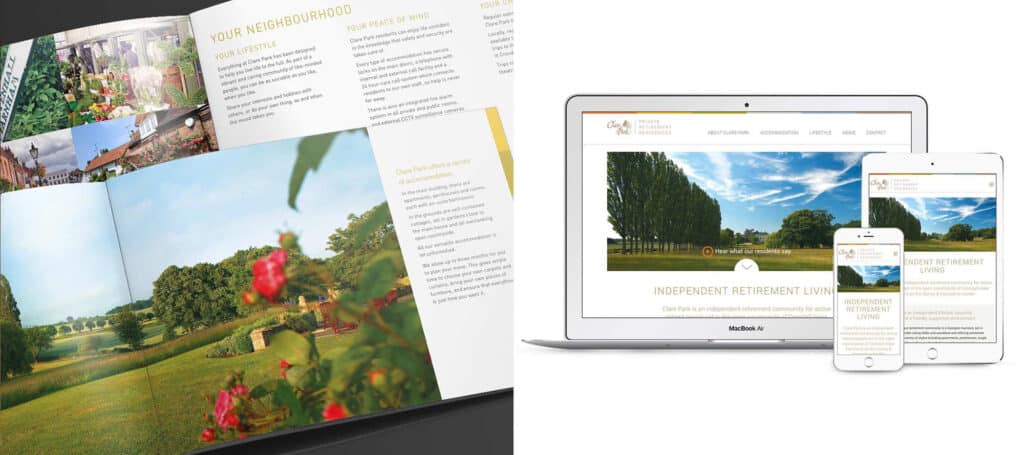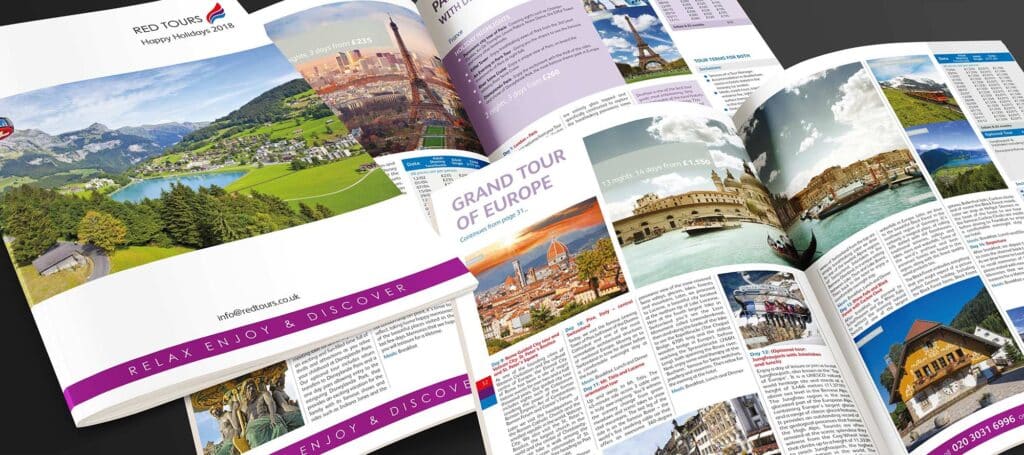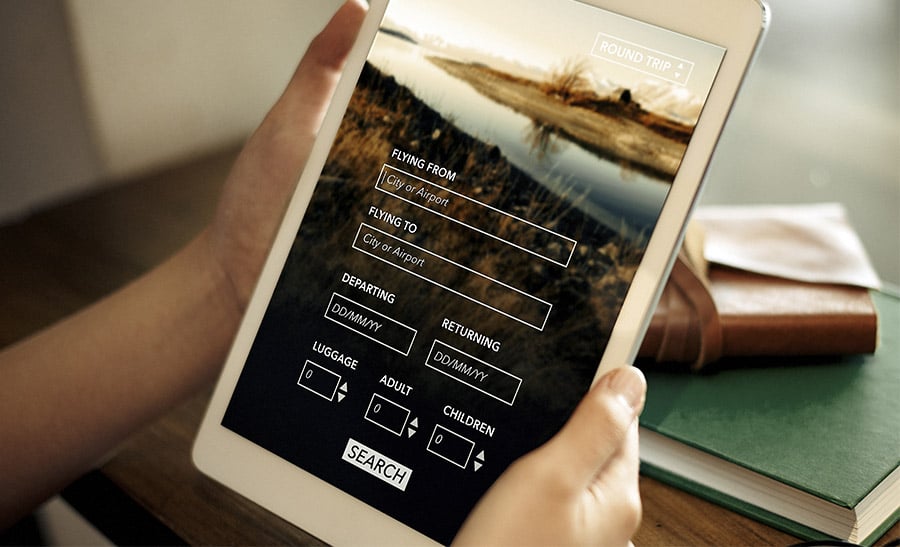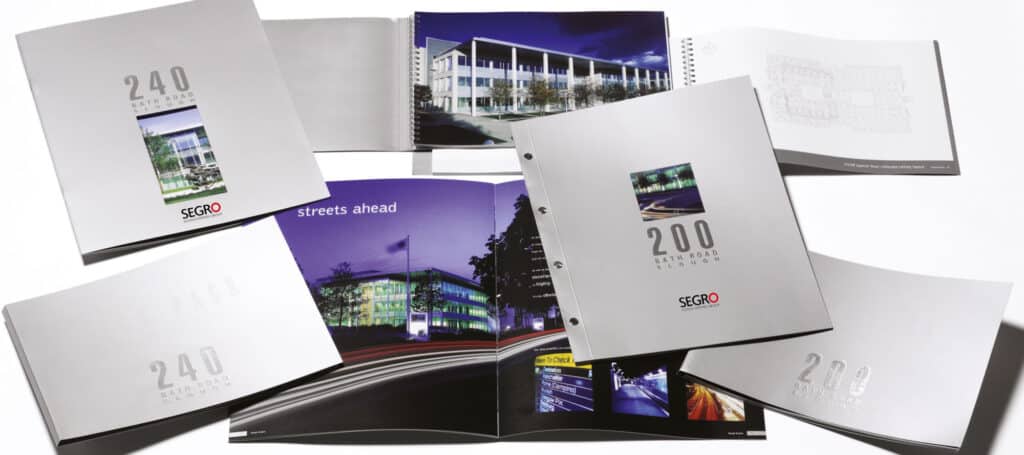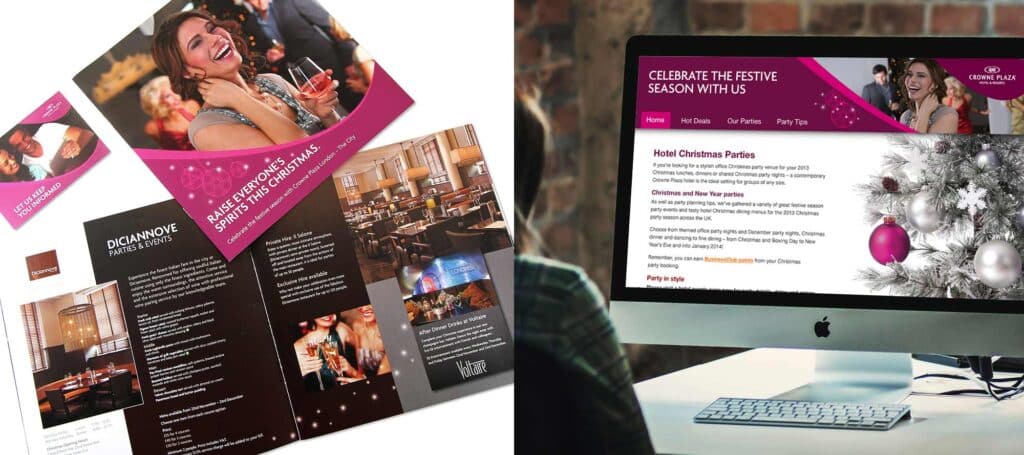Digital vs. print brochures: Pros & cons guide
When it comes to promoting your business, marketing collateral plays a crucial role. Whether you’re attending a trade show, conference, or meeting with potential clients, brochures are an essential tool in your arsenal. However, with the rise of digital marketing, the question arises – is there still a place for printed physical brochures in the modern business landscape?
In this article, we’ll compare digital vs. print brochures and break down the pros and cons of each medium. We’ll explore the options available for businesses and offer advice on selecting the right format for your marketing strategy. By the end of this article, you’ll have a clear idea of which option is best suited for your business’s needs.
Key takeaways
- Digital and print brochures have their respective advantages and disadvantages.
- Printed brochures still offer unique advantages such as tangibility and targeted distribution.
- Online brochures provide greater accessibility, interactivity, and shareability.
- Downloadable PDF brochures are cost-effective and environmentally sustainable, while printed brochures offer a longer shelf life.
- The choice between digital and/or print brochures depends on your marketing goals, target audience, and resources.
Printed or digital brochures?
Choosing between printed and digital brochures can be a tough decision for businesses. Each medium has unique benefits and drawbacks that can impact the effectiveness of your marketing strategy. Here, we examine the advantages and disadvantages of each option to help you make an informed decision.
Printed brochures
Printed brochures are a traditional medium that offer a tangible experience for the reader. They can be easily distributed or displayed in person, making them a great option for businesses wanting to reach a specific audience. Printed brochures have a long shelf life and can make a lasting impression on the reader, particularly for those who prefer a physical copy. However, printing costs can be high, and distribution can be limited to physical locations.
Digital brochures
Digital brochures offer businesses a modern alternative that allows for broader distribution and easier accessibility. They are cheaper to produce and can be easily shared across various platforms, making them a versatile option. Digital brochures can use interactive features, such as embedded videos, animations, and links to other relevant content. However, they have a shorter shelf life than printed brochures and can be easily missed in crowded inboxes or feeds.
| Printed Brochures | Digital Brochures |
|---|---|
| Tangible experience | Broader distribution |
| Long shelf life | Cheaper to produce |
| Limited distribution | Easily shareable |
| Can make a lasting impression | Interactive features |
| High printing costs | Short shelf life |
Ultimately, the decision between printed or digital brochures will depend on the specific goals and resources of your business. Consider factors such as your target audience, budget, and desired distribution channels. Whichever medium you choose, ensure that your brochure design is professional and visually engaging to make the biggest impact.
Are printed brochures still effective?
In today’s digital age, there is no denying the multitude of benefits that digital brochures offer. However, printed brochures still hold a crucial place in many successful marketing strategies.
Their tangibility and physicality allow them to create a lasting impression on potential customers. You can’t ignore the fact that a beautifully designed brochure, with a striking visual presentation, can make a big impact on a person – and that person may be more likely to keep it around for future reference or share it with others.
Additionally, printed brochures can be easily targeted to specific demographics or geographic areas. This enables businesses to tailor their brochures to their specific target market, providing potential customers with relevant and useful information.
That being said, there are limitations associated with printed brochures. They can be expensive to produce, requiring design and printing expenses, and become outdated quickly. They also have a limited reach and may not be suitable for certain industries or campaigns.
To determine whether printed brochures are effective for your business, you need to consider your target audience, marketing goals, and resources. If you have a highly targeted market, and cost is not a significant issue, printed brochures could be an effective marketing tool for you.
Online brochures: The modern alternative
With the increasing shift towards digital marketing, online brochures have emerged as a modern alternative to their printed counterparts. They provide numerous benefits to businesses in the digital realm, making them a highly effective marketing tool.
Accessibility
Online brochures are accessible to anyone with an internet connection, making them available to a wider audience than printed brochures. They can be accessed anytime, anywhere, through various digital devices, including smartphones, laptops, and tablets. This provides businesses with a broader reach, as potential customers can view their brochures from any location at any time.
Viewing PDF/digital brochures on a mobile device can often be challenging, as the smaller screen size may not effectively accommodate the scale and layout designed for larger displays.
Interactive features
Online brochures can incorporate interactive features such as videos, animations, and hyperlinks, making them more engaging and dynamic than traditional brochures. They also allow for customisation and personalisation to target specific demographics, and their interactivity can provide valuable insights into customer preferences and behaviour.
Shareability
Online brochures can be easily shared through email, social media, and other online platforms, making them a highly effective tool for generating leads and referral traffic. Social media sharing buttons can be added to pages to encourage users to share and spread the word.
Professional digital brochure design
Creating a visually engaging and professional digital brochure is crucial to its effectiveness. A well-designed online brochure can boost brand image and convey a strong message. Professional help may be required to ensure that the design is up to standard and aligns with the brand image and message.
Overall, online brochures offer a modern alternative to printed brochures that can be more accessible, interactive, shareable and effective for reaching a wider audience. It’s essential to consider this option for businesses that want to increase their digital presence and remain competitive.
What’s best: a downloadable PDF or a printed brochure?
When it comes to choosing between a downloadable PDF brochure or a printed brochure, there are pros and cons to consider. Here is a breakdown of factors to help you determine which one is best for your business:
| Downloadable PDF Brochures | Printed Brochures | |
|---|---|---|
| Cost-effectiveness | Pros: Low cost to produce and distribute. Cons: May require a professional designer for optimal results. | Pros: Flexible pricing options for volume printing. Cons: Higher cost for professional design and printing. |
| Environmental Sustainability | Pros: Zero paper usage. Cons: May have a greater carbon footprint due to digital device usage. | Pros: Paper can be sourced from sustainable forests and recycled materials Cons: Printing and distribution processes may have a larger carbon footprint. |
| Shelf life | Pros: Can be updated with ease. No space limitations on content. Cons: Requires a reliable hosting solution for consistent access. | Pros: Visually impressive with a tactile experience. Cons: Requires more storage and distribution space. May become outdated before distribution is completed. |
| Targeted demographics | Pros: Can be shared and downloaded with ease. Potential for wider distribution and audience reach. Cons: May require a larger investment to provide a high-quality interactive experience. | Pros: Can be directly mailed to target audiences. Tactile engagement appeals to older demographics. Cons: Requires a thorough distribution list and method for optimal results. |
Ultimately, the decision of whether to use PDF brochures or printed brochures will depend on your business’s specific needs and goals. Consider your budget, target audience, marketing strategy, and environmental impact to make the best choice for your business. Whether you choose to go digital or print, be sure to invest in professional design and quality content to guarantee maximum ROI.
Conclusion
In conclusion, selecting the right medium for your business brochure strategy ultimately depends on your marketing goals, target audience, and available resources. While printed brochures offer a tangible form of communication, allowing for targeted distribution and reaching specific audiences, they may have limitations compared to digital alternatives.
On the other hand, online brochures bring accessibility, interactivity, and the potential for a wider audience. Downloadable PDF brochures offer cost-effectiveness and environmental sustainability, while printed brochures provide a longer shelf life and the ability to target specific demographics.
It’s essential to weigh the pros and cons of both options before deciding. Consider the unique needs and preferences of your target market and design your brochure accordingly. Brochure design is a crucial aspect of communicating your brand effectively. Seeking assistance from professional designers ensures your brochure achieves a visually appealing design, effective language and structure best suited for your target audience.
Our guide has provided an overview of the benefits and drawbacks of both digital and print brochures, it is not intended to be a definitive answer. However, it is intended to help you make a well-informed decision. We hope the information provided has been useful and will guide you towards a successful brochure campaign.
FAQ
Can I have both printed and digital versions of my brochure?
Absolutely! Many businesses find it beneficial to have both printed and digital versions of their brochures. This allows you to reach a wider audience and cater to different preferences. You can use digital brochures for online content and social media platforms, while printed brochures can be distributed at events and trade shows or sent directly to clients.
What are the considerations when deciding between a printed brochure and a digital brochure?
When deciding between a printed brochure and a digital brochure, you should consider factors such as your target market, marketing goals, and available resources. Printed brochures may be more suitable for businesses targeting a specific geographic area or demographic, while digital brochures offer the advantage of cost-effective distribution and the potential for greater reach.
Which is more cost-effective, a printed brochure or a digital brochure?
The cost-effectiveness of a brochure depends on various factors, such as printing and distribution costs, target audience, and desired reach. Digital brochures often have lower production and distribution costs compared to printed brochures. However, it’s important to assess your specific business needs and target audience to determine the most cost-effective option for your marketing strategy.
Are digital brochures more environmentally friendly than printed brochures?
Digital brochures are generally considered to be more environmentally friendly than printed brochures. They save on paper and printing materials, reducing waste and promoting environmental sustainability. However, it’s worth noting that digital brochures still require energy consumption for online hosting and distribution, so it’s essential to consider the overall environmental impact of your digital marketing efforts.
Want a brochure designed by professionals?
Transform your ideas into impactful marketing materials with our expert brochure design services.

Richard is responsible for the creative direction of all our clients’ work at rhc, from strategy and concept development to the meticulous attention to detail and craft skills that ensure that every concept is executed to the highest possible standard. He has over 26 years of experience in the Design, Brand and Communications business as a creative consultant and creative director.
